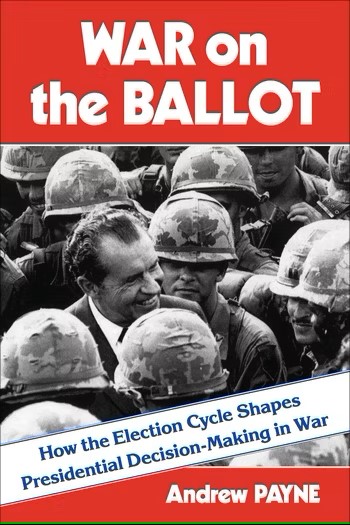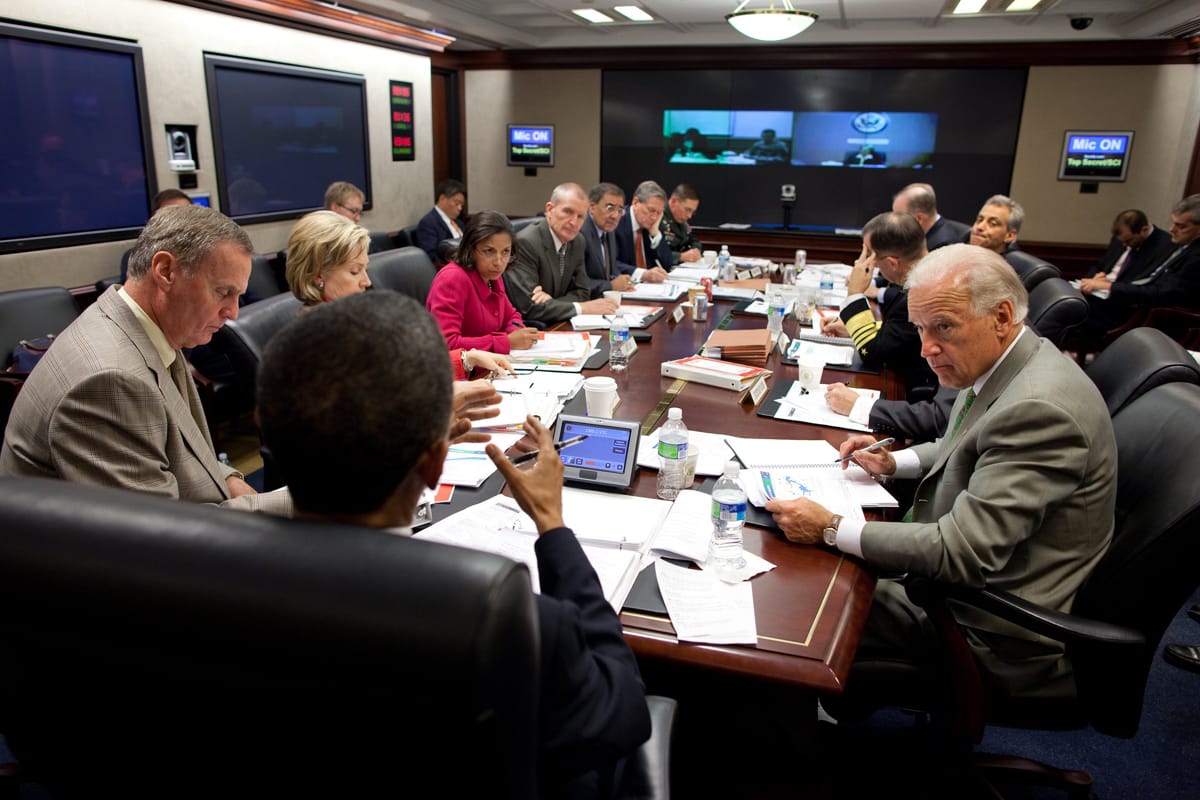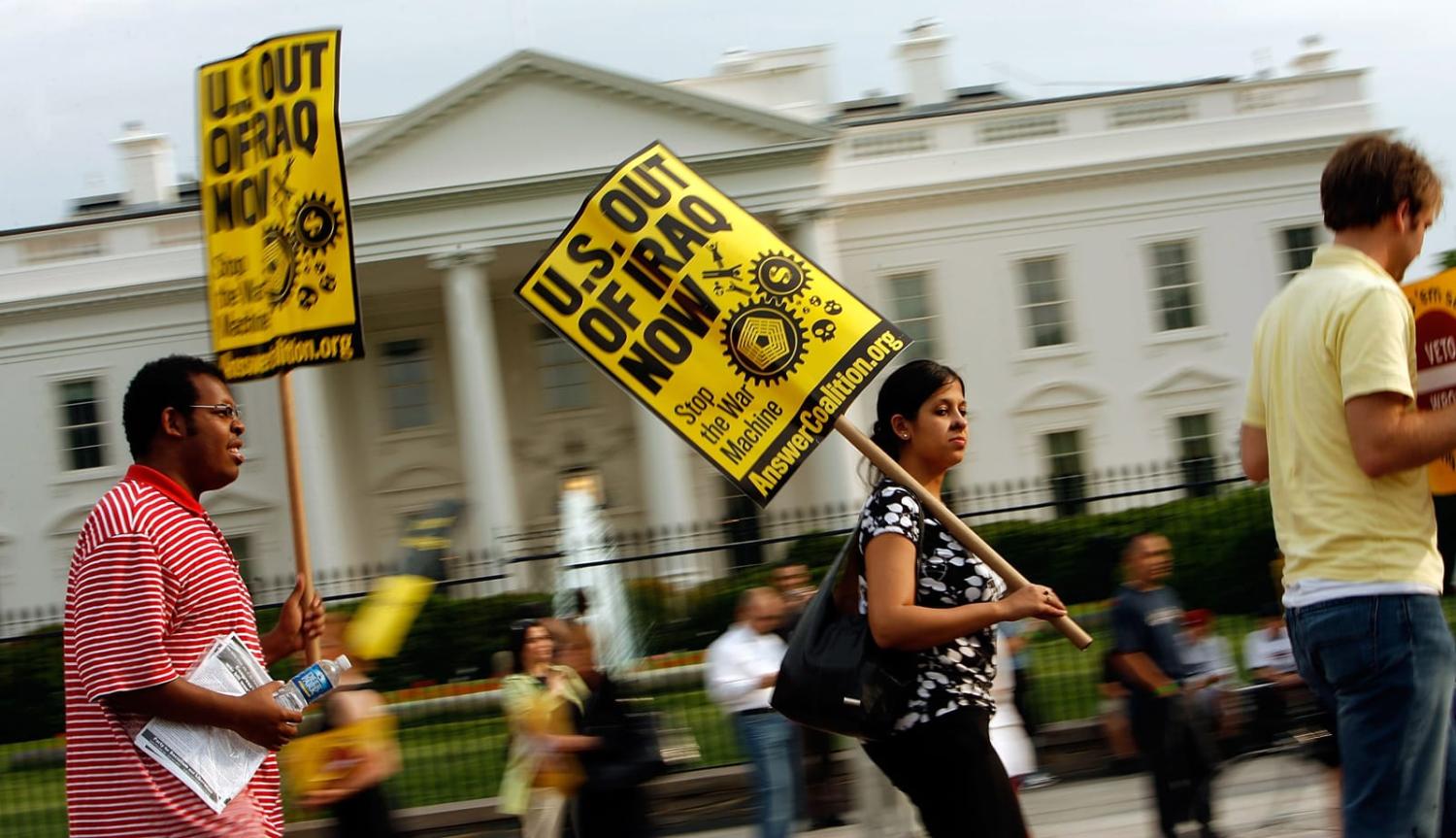Book review: War on the Ballot: How the Election Cycle Shapes Presidential Decision-Making in War, by Andrew Payne (Colombia, 2023)
Political scientist Andrew Payne provides a fascinating account of the interplay between politics and policy choices during times of war by examining three conflicts and six US administrations: the Korean War during the Truman and Eisenhower years (1950-1953), the Vietnam War during the Johnson and Nixon presidencies (1963-1973), and the Iraq War during the Bush and Obama terms (2003-2011). Payne’s work is important because there are only a few great books that explain how politics impacts wartime policies.
What Payne finds is intuitive but under-appreciated: Across three of America’s costliest wars, political considerations and the rhythms of the electoral cycle impacted military and diplomatic strategy in meaningful ways. Payne’s case studies are richly detailed stories about the pernicious effect of elections on strategy, and he expresses deep concern about the extent to which “the president’s deviation from his strategic preference has incurred major opportunity costs and needless bloodshed”.

In War on the Ballot, Payne isolates instances of consequential decision-making and proposes a model for understanding how presidents respond to electoral pressures. He leverages newly declassified documents, recorded conversations (e.g., Nixon and Kissinger) and interviews he conducted with recent senior civilian and military leaders (e.g., Meghan O’Sullivan, David Petraeus, Michèle Flournoy) to inform his analysis.
Payne’s focus on pulling apart the decision-making process chronologically, with careful consideration of electoral phases, is illuminating. His model, like all models, is a simplification of messy political realities. However, it’s possible for readers who know these wars well to disagree with specific assumptions and conclusions, and nonetheless find their understanding deeply enriched by Payne’s systematic approach.
Payne begins his analysis of each instance by establishing what policy has emerged as the president’s strategic preference. He identifies five mechanisms or ways that elections contribute to an outcome that deviates from that preference: delay, dampen, spur, hangover, and spoiler.
For example, in the spring of 2006, Bush was certain that Iraq required a course correction, and by the summer he was persuaded that a surge in US forces was necessary to re-establish security. To avoid the impression that the administration’s strategy was failing while members of his party were running for re-election, Bush delayed the surge until January 2007.
Elections also lead presidents with a strategic preference for a de-escalatory policy to spur or “dial up the bellicosity” of options under discussion to satisfy what they interpret as a belligerent public mood. Truman’s 1950 decision to allow General Douglas MacArthur to cross the 38th parallel fits this category, as does Nixon’s escalatory response to the Easter offensive in 1972. Johnson’s gradual escalation policy in Vietnam (1964–65) involved a mix of all three tactics: delay, dampen, and spur.
Further, Payne considers instances when the hangover mechanism constrains a president’s ability to make the optimal choice given political pressure to fulfil campaign promises. Candidate Obama made a highly specific and unambiguous pledge to a 16-month withdrawal timetable for Iraq. Once in office, Obama was persuaded that stability in Iraq was too fragile for that explicit timeline. Initially, the withdrawal from Iraq was finessed without meaningful political blowback, largely because this shift occurred during the most permissive phase of the electoral cycle – the honeymoon phase. However, Iraq re-emerged as a politically sensitive issue in the lead-up to the 2010 midterms given ongoing bursts of violence and a protracted struggle in Baghdad to form a government. Obama deferred active discussion of next steps in Iraq until 2011, and then in 2012 when he was facing re-election, rejected military advice to adopt a slow, conditions-based withdrawal and made good on his campaign promise to remove all US troops from Iraq.

Finally, Payne highlights the capacity of a spoiler mechanism to thwart a president’s efforts to de-escalate a conflict, particularly during the lame duck period of his presidency. Examples of this mechanism in action include the failed peace-making attempts of presidents Truman and Johnson (1950 and 1968) and later in the Bush administration with Iraq. Payne’s careful research shines in these “lame duck” phases when we witness a dramatic power shift from the president to the incoming administration, and US allies and adversaries who also consider likely election outcomes and make anticipatory moves.
In three areas I disagreed with Payne’s analysis.
First, I would have liked Payne to treat electoral pressures seriously by including the advice and perspective of political advisors and party leaders and domestic policy allies alongside the perspective of military and defence professionals. This would certainly complicate the model but would ultimately be a more realistic representation of political reality. In a democracy, the question is rarely, did the president choose the national interest over political interest, or the strategically optimal over the politically pragmatic? Rather, the question is – all things considered – did he seem to get the balance right?
Second, Payne’s model relies on being able to demonstrate that the president believed that a certain choice was strategically preferrable and then modified that choice to suit his political circumstance. But at times, Payne allows the strategic preference to be defined by retrospective analyses of the conflict or by the military. For example, it’s not clear that Johnson believed in the utility of any of the options he considered in 1963-64. There’s also no evidence that Obama agreed with the conditions-based withdrawal that was the strategic preference of military and civilian defence leadership.
The interviews Payne conducted with Bush and Obama era officials meaningfully contribute to the feeling of being present during behind-the-scenes deliberations. But the Iraq war remains a contested issue, and the legacy of these officials is inextricably tied to that war. Their perspectives are valuable but not interchangeable with the national interest.
Finally, I share Payne’s concern about the opportunity costs and needless bloodshed associated with specific wartime decisions but see these examples as only part of the story. In Vietnam and Iraq, the foreign policy disasters that loom largest in the American imagination, the escalatory inclinations of Nixon and Bush were at first tolerated and/or encouraged by electoral pressures. However, both presidents were also constrained by elections in their second term. It’s possible to argue that the system works in the end.
But presidents make a lot of mistakes – some but not all electorally motivated – and democratic accountability is ultimately a lagged response. That lag, in the context of a war and an increasingly powerful presidency, is often too long to forestall disaster.

